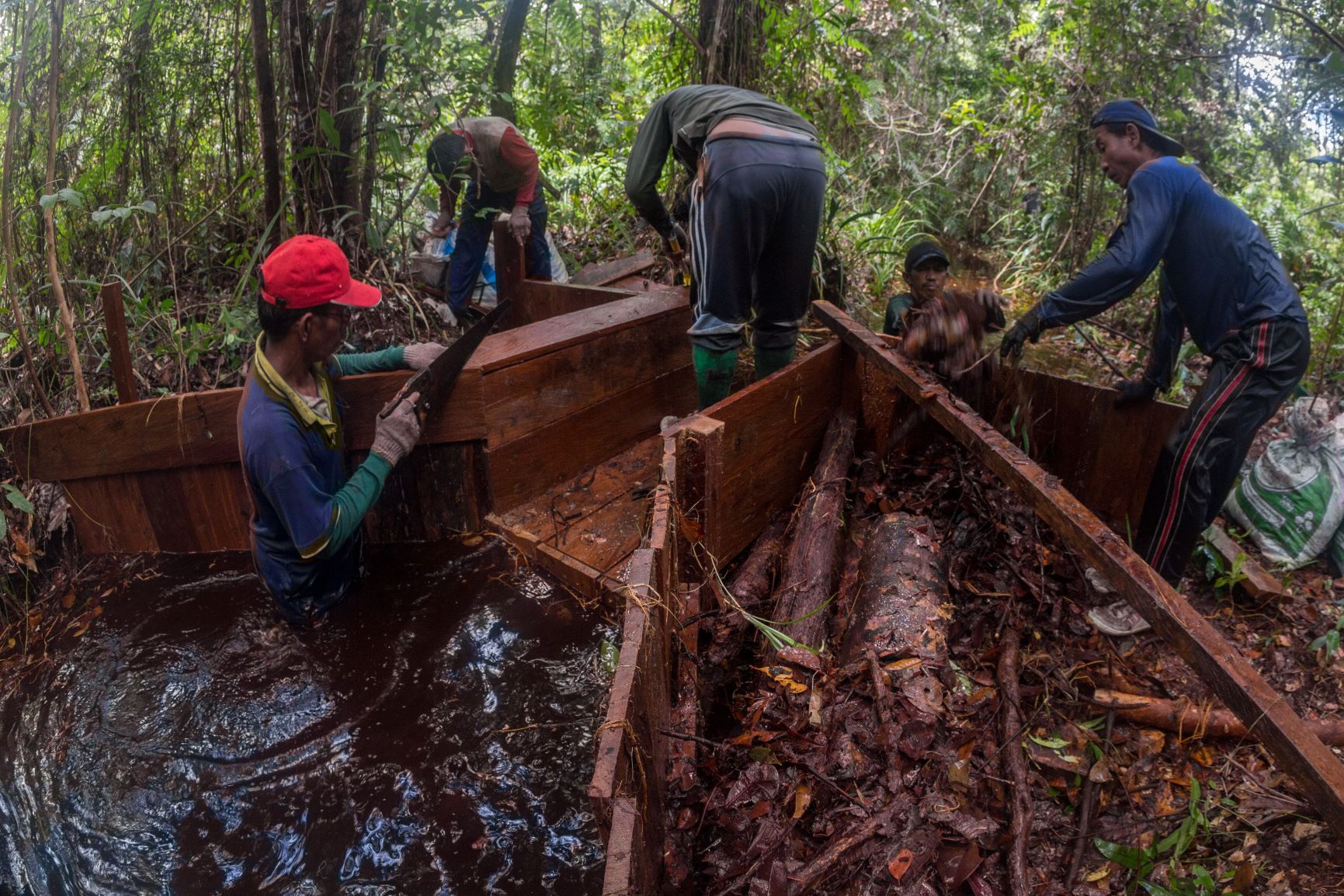Blocking drainage canals prevents forest fires
A dramatic consequence of the canal constructions are annually recurring forest fires during the dry season, because the water stored in the peat soil is drained into the surrounding rivers. Thus, the water table gradually sinks and the peat soil dries out. The vegetation dies due to the drought, and at the same time the risk of fire increases dramatically.
GREEN BOOTS is supporting the Borneo Nature Foundation to block drainage canals in Sebangau National Park in order to raise the water level again and to wet the peat soil. This will prevent further fires and stimulate peat growth again.

600 dams against the drainage
The canals will be filled with natural materials. The aim of the project is to obstruct the already mapped canals in the northern Sebangau rainforest. Experiences from previous constructions shows that it takes an average of 22 dams per canal to achieve efficient water retention. On the first kilometers of the canals, where there is a stronger flow, a dam is constructed every 50 meters. Further inland, a dam is needed every 100-200 m.
The dammed canals are regularly monitored by measuring the water flow rate as well as the water level, checked and repaired if necessary.
Material and tools for the dams are transported to the canals by boat and on foot. The inhabitants of the surrounding villages help with the transport and construction of the dams. They benefit from an alternative source of income, and at the same time an understanding of forest conservation is promoted.
Watch this video to learn how the dams are built.
Importance of swamp rainforests for the climate
A special feature of the rainforests in Indonesia are the tropical swamp rainforests. They cover almost ten percent of Indonesia's surface, mostly in low-lying, coastal areas on the islands of Sumatra, Borneo and New Guinea (West Papua). The lush swamp rainforests are already 8000 years old. Characteristic are the moist peat soils. In their natural state, swamp rainforests are constantly flooded and the peat content is constantly growing.
Peat soils of tropical swamp rainforests are enormous carbon reservoirs and are therefore of great importance for the global climate. With 3000 to 6000 tons of carbon per hectare, they store up to 50 times more carbon than an equally large area of rainforest without peat soil. The destruction of swamp rainforests contributes more than three billion tons of CO₂ per year to global climate change.
In Sebangau National Park alone, several thousand hectares burn each year. To date, 67,000 hectares in Sebangau National Park have already been destroyed by fire - an area the size of Lake Geneva and Lake Zurich combined. As a result of the forest fires, habitats for animals and plants are lost and people live in constant danger from the fires.





